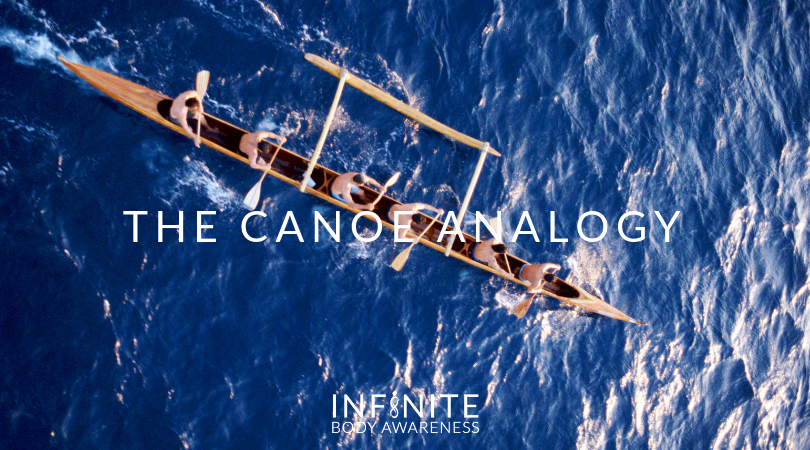
The new year is off and running. By the time this blog goes out, February will already have started. I recently participated in a celebration of life for one of my practice members. It was celebrated on Sunday, the day when the total lunar eclipse of the Super Blood Wolf Moon happened. It was a touching event and celebrated a life of a gentleman who always inspired me with his wit, sense of humor, and zest for life. He shared with me several years back that he wanted to live life for as long as possible and live well. He was not willing to wait for the sun to set, but was instead, an avid seeker of knowledge and student of life.
His celebration required paddling a canoe, due to his wishes of spreading his ashes in the ocean. I haven’t paddled a canoe in over 28 years, so it was a bit nostalgic to pick up a paddle and call the switches so that the other paddlers could change from the right side to the left side of the canoe. I found my body remembering where to place my legs and how to place the paddle in the water and pull. The salty smell of the ocean, the sound of the waves hitting the side of the canoe, and the cool touch of the ocean water brought me to be present in the moment.
Thoughts of my high school paddling career came in snippets and I realized how teamwork, timing, and rhythm were essential in moving the canoe forward. When all six members paddled in rhythm and were in sync, the canoe would move almost effortlessly in the water. When there was any bickering or disharmony amongst any of the members, the canoe would lag and struggle to pull through the water. I learned to paddle in all six spots of the canoe including the steersperson, realizing that each seat is essential to get the canoe moving. It’s amazing how a person paddling in the front could feel a shift in the canoe’s movement, if someone was out of rhythm.
The first seat is the stroker. This person has to be consistent with their paddling, because everyone else follows their lead. The second seat is the caller who mirrors the stroke pace and calls for the switching. The third and fourth seats were for the strongest paddlers, because they had to pull the dead water under the middle of the boat. The fifth seat was the utility. They helped with power, watching the ama (outside float), as well as assist in bailing out water if needed, and the sixth and final seat, was the steersperson. The sixth position was the most challenging, because this person was the captain, and had to be the most vigilant and observant of any shifts in the ocean current, upcoming waves, or making the necessary adjustments to keep the canoe going in a straight line or to turn.
The canoe is a perfect analogy of how life can be when you honor the timing, rhythms, and harmony. Many times if you allow your mind/ego or thinking brain to guide your body, you tend to go off course and struggle ensues. Past experiences, mental constructs, expectations, and judgments can quickly lead to feeling literally stuck in the water. When you allow your body to guide you, and like a steersperson, you notice the subtle shifts when situations arise, and make the necessary adjustments, your life, like the canoe, can move effortlessly. Body pains, health ailments, dis-eases are all signals of your body attempting to get your attention so you can make the necessary changes and adjustments.
By working with your body, instead of fighting it, it will go a long way in achieving more ease in your life. Recognizing that pain and life threatening health conditions are not your body’s way to punish you, but instead your body’s last cry for you to pay attention and make the necessary shifts to get back inline. Allow your heart and intuition to be your steersperson, let your desire and will be the power of the canoe, and last but not least, let the mind be the pace setter who follows the orders. Learning to establish this intimate mind-body connection will serve you now and for many years to come in the ever-changing waves of life.
